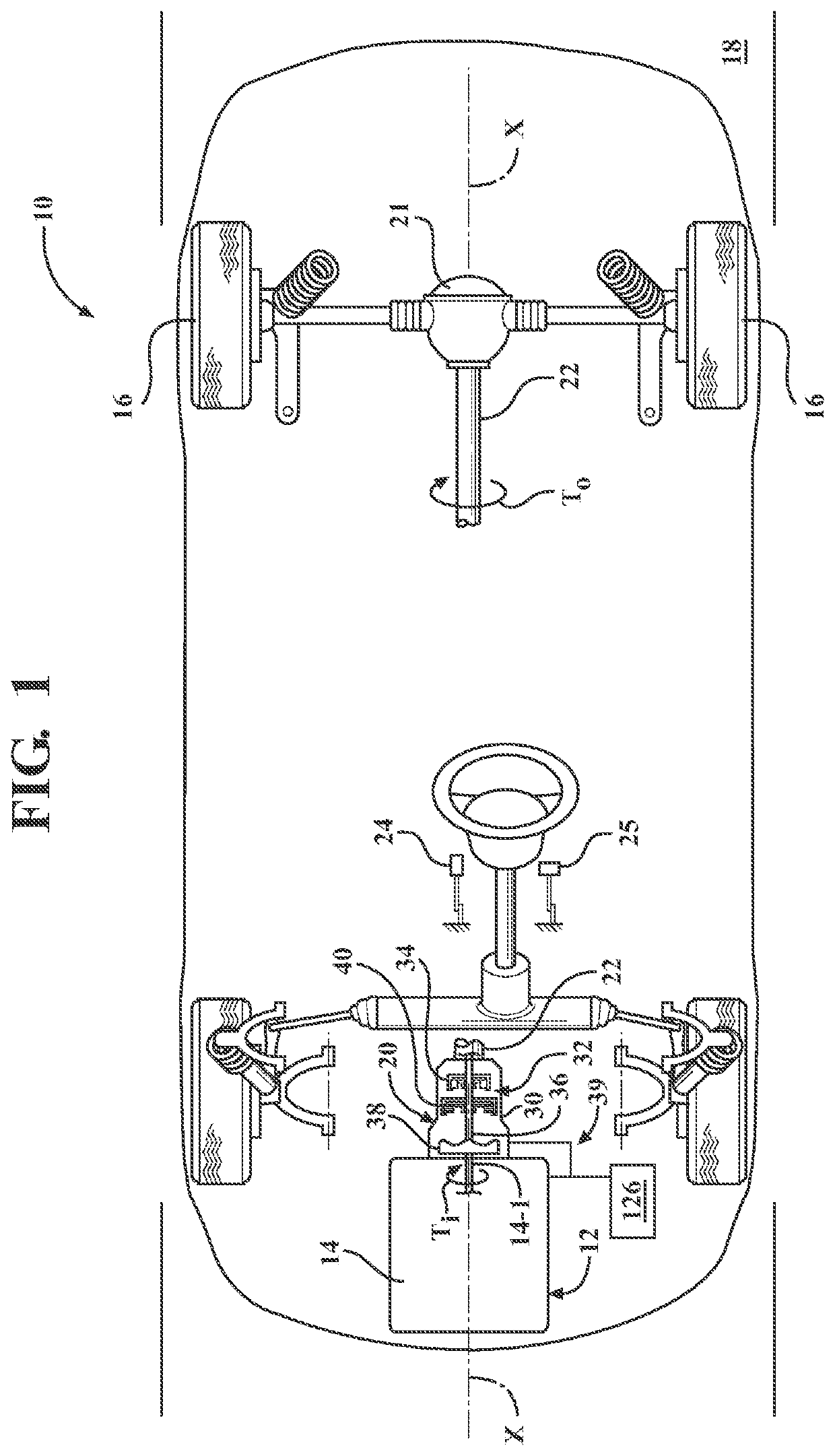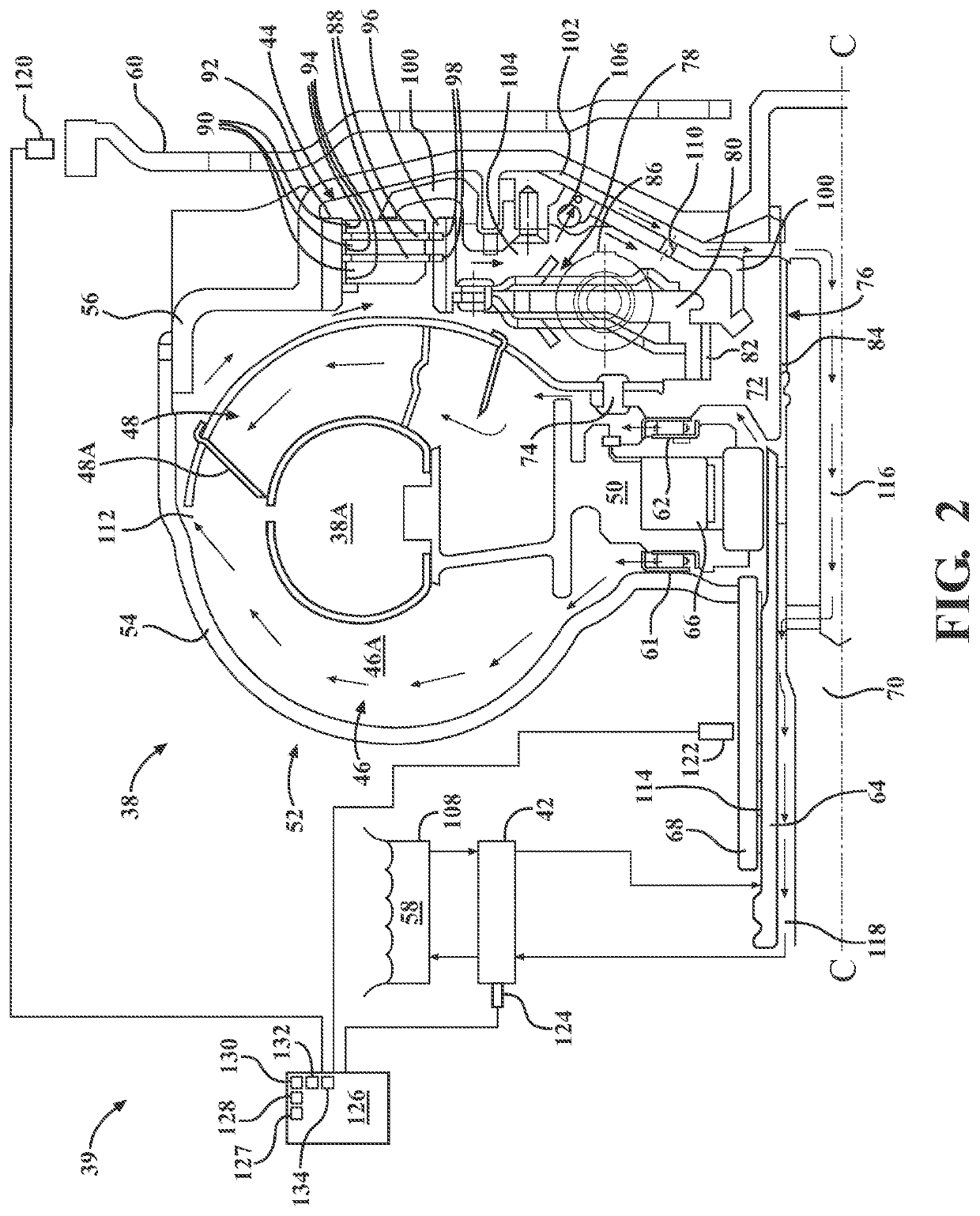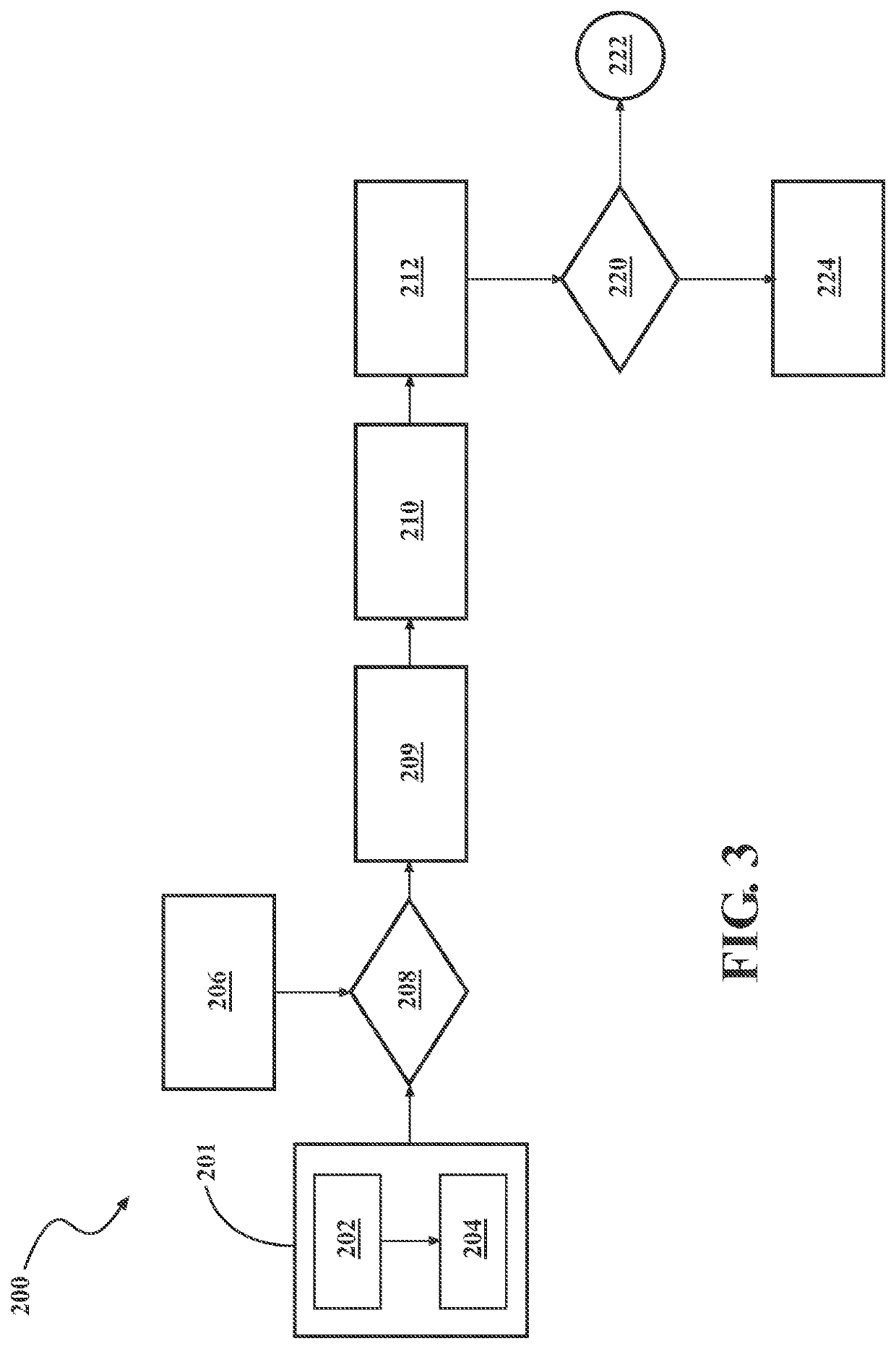Torque converter clutch control system health estimation
a technology of clutch control system and torque converter, which is applied in the direction of fluid gearing, instruments, gearings, etc., can solve the problems of stalling the engine, unable to sufficiently attenuate the vibration of the engine input, and unable to achieve the effect of reducing the power consumption of the isolator
- Summary
- Abstract
- Description
- Claims
- Application Information
AI Technical Summary
Benefits of technology
Problems solved by technology
Method used
Image
Examples
Embodiment Construction
[0023]Referring to FIG. 1, a vehicle 10 having a powertrain or propulsion system 12 is depicted. The vehicle 10 may include, but not be limited to, a commercial vehicle, industrial vehicle, passenger vehicle, aircraft, watercraft, train or the like. It is also contemplated that the vehicle 10 may be another mobile platform, such as an airplane, all-terrain vehicle (ATV), boat, personal movement apparatus, robot and the like to accomplish the purposes of this disclosure. The propulsion system 12 includes a power source 14 configured to generate torque Ti for propulsion of the vehicle 10 via drive wheels 16 relative to a road surface 18.
[0024]The propulsion system 12 also includes a transmission 20, which may be configured as an assembly that automatically shifts between or selects discrete gear-ratios, such as a multiple speed-ratio automatically-shiftable, a.k.a., automatic, or as a continuously variable gear-ratio transmission (CVT). The transmission 20 is operatively connected to ...
PUM
 Login to View More
Login to View More Abstract
Description
Claims
Application Information
 Login to View More
Login to View More - R&D
- Intellectual Property
- Life Sciences
- Materials
- Tech Scout
- Unparalleled Data Quality
- Higher Quality Content
- 60% Fewer Hallucinations
Browse by: Latest US Patents, China's latest patents, Technical Efficacy Thesaurus, Application Domain, Technology Topic, Popular Technical Reports.
© 2025 PatSnap. All rights reserved.Legal|Privacy policy|Modern Slavery Act Transparency Statement|Sitemap|About US| Contact US: help@patsnap.com



